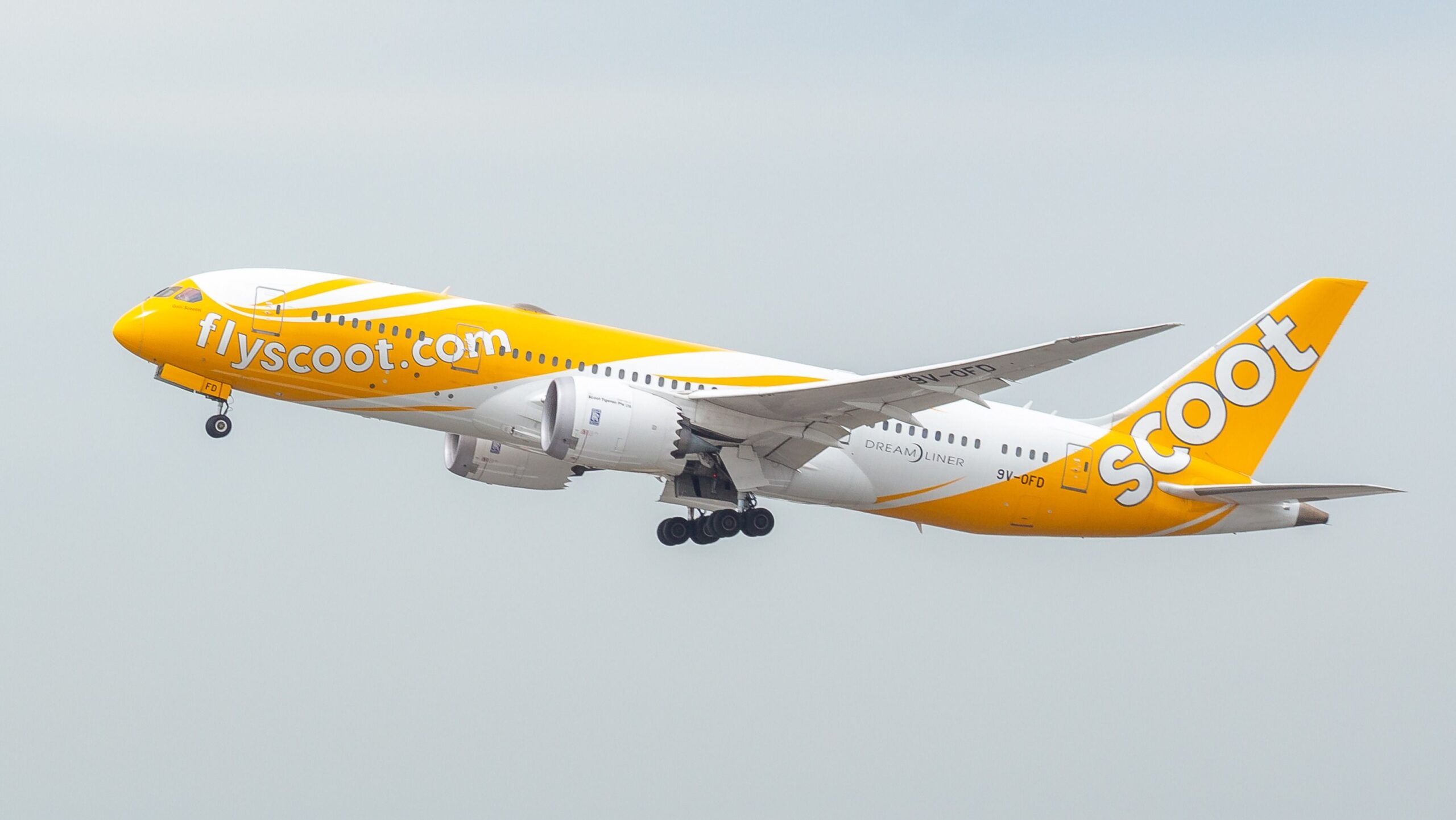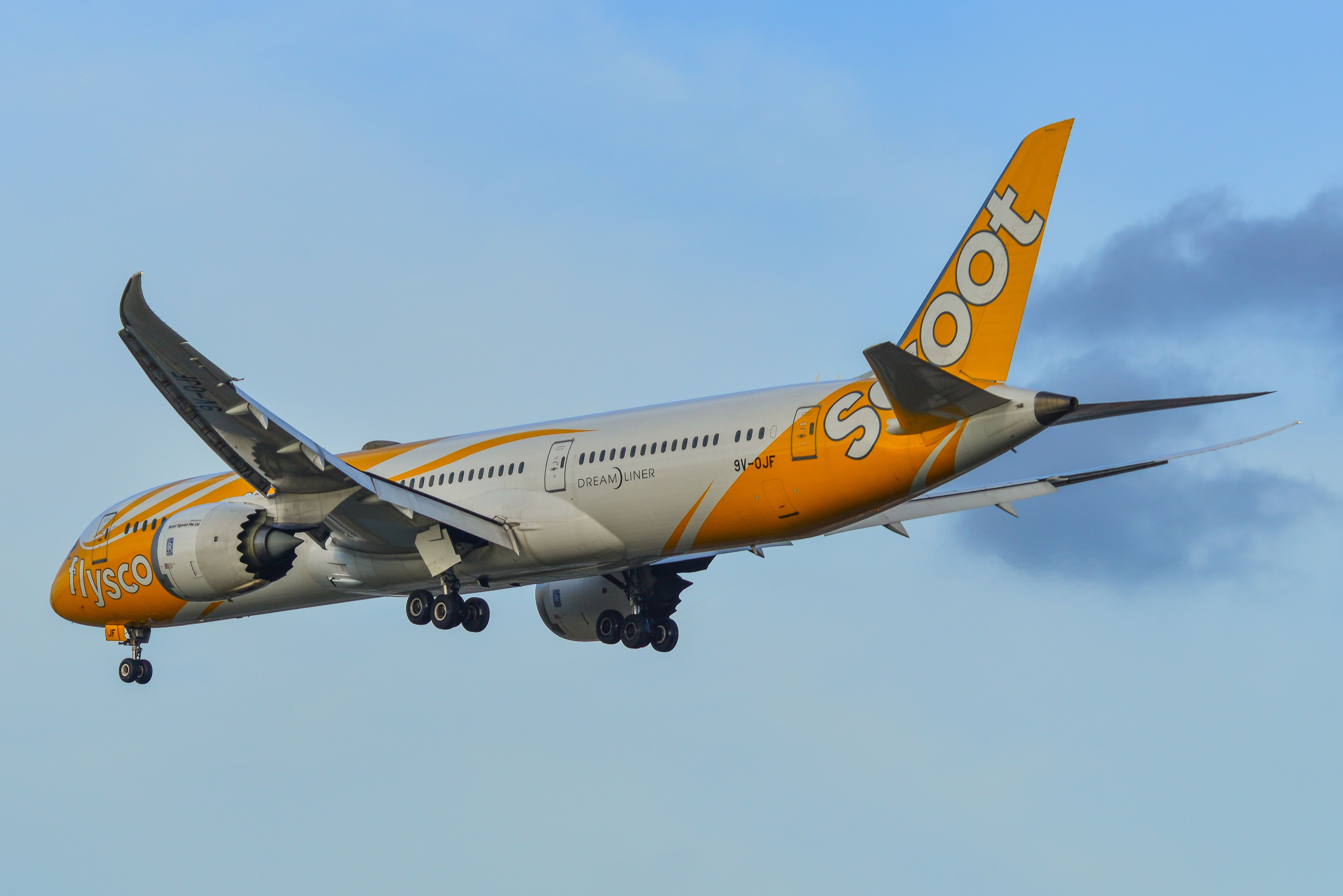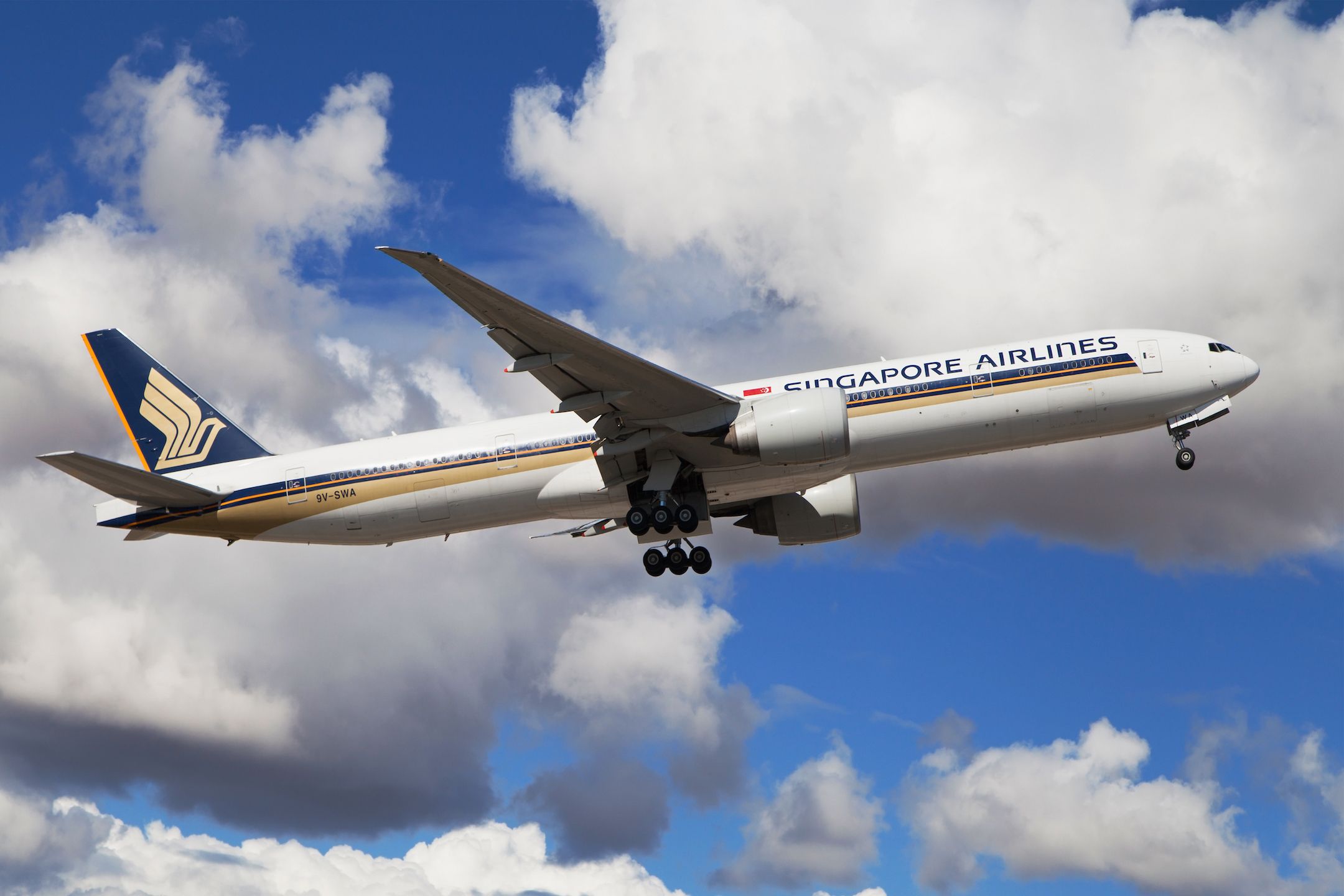Summary
- Scoot’s Boeing 787 encountered severe turbulence flying from SIN to CAN, injuring seven and hospitalizing one.
- Clear air turbulence at 20,000 feet caused injuries, as per the airline.
- Climate change is blamed for increasing clear air turbulence incidents.
A Scoot Boeing 787 Dreamliner experienced turbulence during a flight from Singapore (SIN) to Guangzhou (CAN), China. Seven passengers were injured, one of whom required hospitalization, according to a report by The Strait Times.
The incident details
Scoot’s Boeing 787-9 Dreamliner, registered as 9V-OJD, was operating flight TR100 from Singapore Changi International Airport (SIN) to Guangzhou Baiyun International Airport (CAN) when it suddenly encountered turbulence during its approach to the final destination.
Photo: Phuong D. Nguyen | Shutterstock
Flightradar24 data shows that the aircraft took off on September 6, 2024, at 5:45 am local Singapore time. The flight lasted three and a half hours and landed without further incident. In a statement to The Strait Times, the airline’s spokesperson said:
“We can confirm that four passengers and three crew members received medical assistance immediately upon arrival in Guangzhou. As at Sept 6, 8.30 pm local time, one passenger was hospitalised for further observation.”
Scoot
, owned by Singapore Airlines Group (SIA), added that this was a case of clear air turbulence, which occurred at an altitude of approximately 20,000 feet (six kilometers).
This was the second case of severe turbulence within a few months for Singapore Airlines Group (SIA). On an earlier flight from London to Singapore, the aircraft experienced turbulence that caused it to jolt violently for about five seconds. As a result, one British passenger died, and dozens of others were injured.
![]() Singapore Airlines
Singapore Airlines
has announced a compensation package and reiterated its commitment to provide full support and assistance to all passengers traveling on the flight.
More about clear air turbulence
Clear air turbulence (CAT) is invisible and dangerous, as pilots have little warning when navigating through it. CAT is a unique meteorological phenomenon that occurs when turbulent masses of air moving at different speeds collide without visual clues, such as clouds, to indicate such movement. As a result, pilots are often blindsided when commercial airliners, even those as large as a Boeing 777 or Boeing 787, encounter clear air turbulence.
Photo: Santi Rodriguez | Shutterstock
This type of turbulence is particularly hazardous because it can strike when passengers and crew are moving around the cabin or seated without their seatbelts fastened. However, even in extreme cases, injuries are uncommon if passengers receive sufficient warning and are wearing their seatbelts properly.
Scientists suggest that climate change is contributing to the increased frequency of clear air turbulence. In a comment to the BBC, Paul Williams, an atmospheric scientist at the University of Reading, said:
“In simple terms, climate change is increasing the temperature difference between the warm and cold air masses that collide to form the jet stream in the upper atmosphere. This effect is making the jet stream less stable and allowing more turbulence to break out.”



